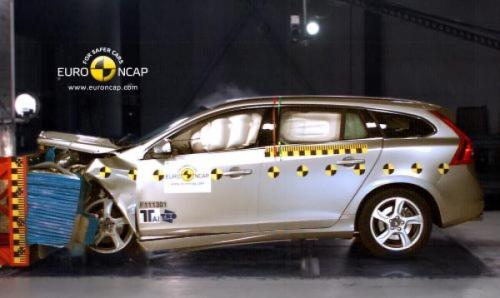The Changing Face of Crash Testing
We are all familiar with the worldwide new car assessment programs (NCAP) and what this has meant in terms of vehicle design over the last quarter of a century. We understand that vehicles are now stronger, more intelligently designed and packed full of safety features that protect the occupants and pedestrians alike. But what happens when a new kind of test is introduced?
NCAP tests as of 1979
In 1979 the National Highway Traffic Safety Administration in the USA began testing vehicles. All over the world this has been replicated and although not all testing regimes are identical, they are broadly the same in terms of content. Vehicle manufacturers are not subject to constantly changing legislation which means there is no legal obligation for rapid development. However the result of NCAP is that there is now a moral obligation to continually push forward the boundaries of safety, making vehicles more commercially attractive to the customer.
Since 1979 the tests have remained mostly unchanged and comprise of;
- Frontal Impact Test (40mph/64kph)
- Side Impact (30mph/50kph)
- Side Impact (pole 19mph/29kph)
- Rear Impact (testing of whiplash prevention technology in seats only, introduced Jan 1 2009)
Data is not only collected from the vehicle but also the highly sophisticated crash test dummies which provide information on likely injuries and severity.

Picture courtesy of Volvo Cars
In some regions there are additional tests (e.g. Euro NCAP tests electronic stability control) and there has been a move over the last ten years to focus outside the vehicle and look at pedestrian safety.
New test
Last year (2012) the Insurance Institute for Highway Safety in the USA introduced a new frontal impact test. The current test involves a vehicle striking a barrier with a 40% overlap, but the new test reduces this to just 25%.
We can clearly see that this change provides very different results from the established 40% overlap test. The crash forces now (mostly) bypass the frontal crumple zones leading to greater damage to the passenger cell. Also note that the resulting forces also move the steering wheel towards the centre of the vehicle, reducing the effectiveness of the driver’s airbag.
Consequences
What does this mean for vehicle manufacturers? Well, some of the vehicles perform well in the new test and this comes as a result of certain manufacturers performing their own in house testing for a number of years, clearly though, some manufacturers will have to make improvements if they seek to perform better in such tests.
We must, as rescuers, keep up to date on such issues that will inform the future and will no doubt have a knock-on effect on rescue techniques. There is a wealth of information available on line and The World Rescue Organisation and its members (ARRO in Australia and UKRO in the UK for example) do excellent work and produce information that is available for rescuers. Of course a large part of my job is research and working closely with new car manufacturers looking at design, construction and how this affects rescue. For this reason, Holmatro will always be a good source of up to date and relevant information. This can always be found on this blog and through other social media outlets such as my twitter feed and Holmatro Rescue World on facebook.
Conclusion
Changing the dynamics of crash tests will challenge motor manufacturers as history tells us that if a vehicle underperforms, it fails to sell. This latest addition to the testing regime (along with others) will have an impact on vehicle design, construction and safety features in general, possibly affecting the way we extricate in the future. From a rescue point of view however, the results of such crash tests should not come as any great surprise. We must understand that although the NCAP tests provide excellent data and allow the public to make an informed choice regarding their purchase, the tests are performed in a controlled environment and allow vehicles to be rated in a structured way. The incidents we attend are of course random in terms of what the vehicle impacts and at what speed.
The key message is to acknowledge that car design and safety is hugely influenced by NCAP testing, and any change in this test regime will have a knock on effect for all those involved in the motor manufacturing industry and as a consequence, those of us involved in the business of rescue.
